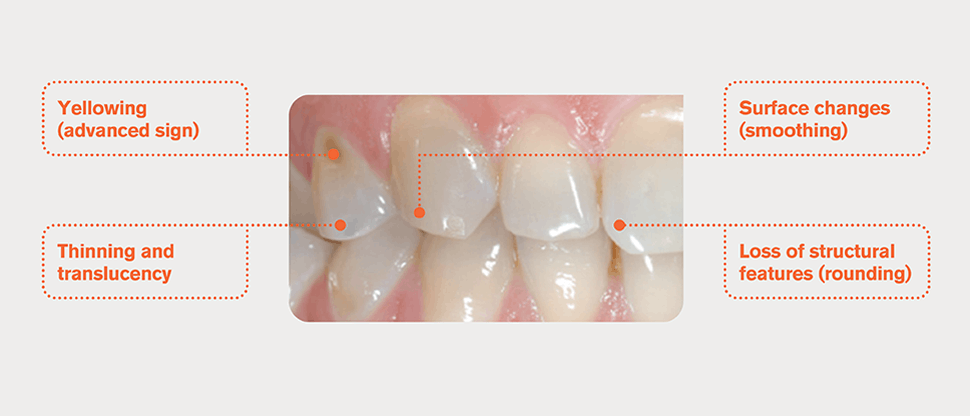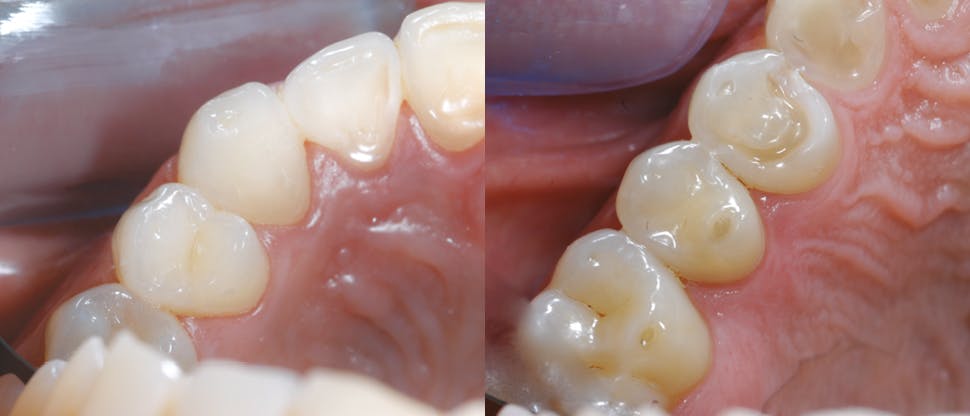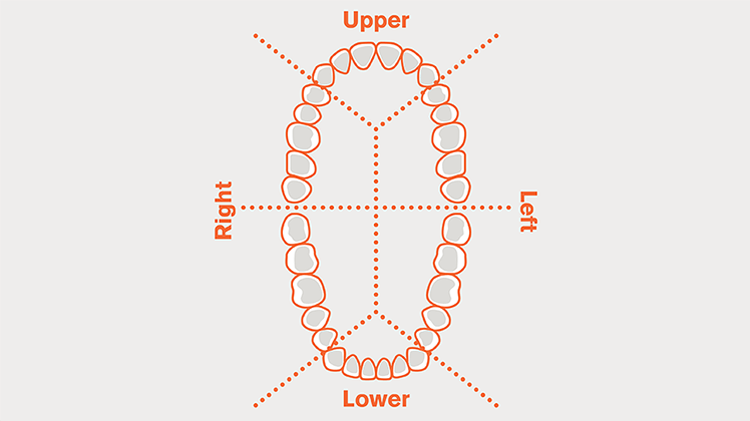Diagnosing Tooth Erosion

How to diagnose tooth erosion
Although the rate of progression for erosive tooth wear is slow, it can impact upon quality of life in later years. Dental Professionals have a duty of care to record signs of the condition in the clinical notes and inform the patient. The Basic Erosive Wear Examination or BEWE is a simple screening tool to use alongside the BPE to help alert the professional and the patient to erosive tooth wear. Explore the tools that can help you identify erosive tooth wear.
Early diagnosis of tooth erosion is important to prevent further, lasting damage1

Common features of enamel wear2,3
These include:
- Yellowing (advanced sign)
- Thinning and translucency
- Surface changes (smoothing)
- Loss of structural features (rounding)

Other signs of tooth erosion2,3
These include:
- Palatal erosive tooth wear
- Occlusal cupping
The Basic Erosive Wear Examination (BEWE)
The BEWE is a quick, effective, validated tool for assessing enamel wear.4 It is recommended in the latest UK Department of Health oral healthcare guidelines,4,5 and was a key tool in the ESCARCEL study; the first pan-European epidemiology study on non-carious cervical lesions (NCCL) and associated risk factors, and the largest and most comprehensive study of its kind.
Find out more about this GSK-supported study here.
Professor David Bartlett discusses the BEWE tool
Learn how to use the BEWE tool in practice from Professor David Bartlett at King’s College London Dental Institute.

